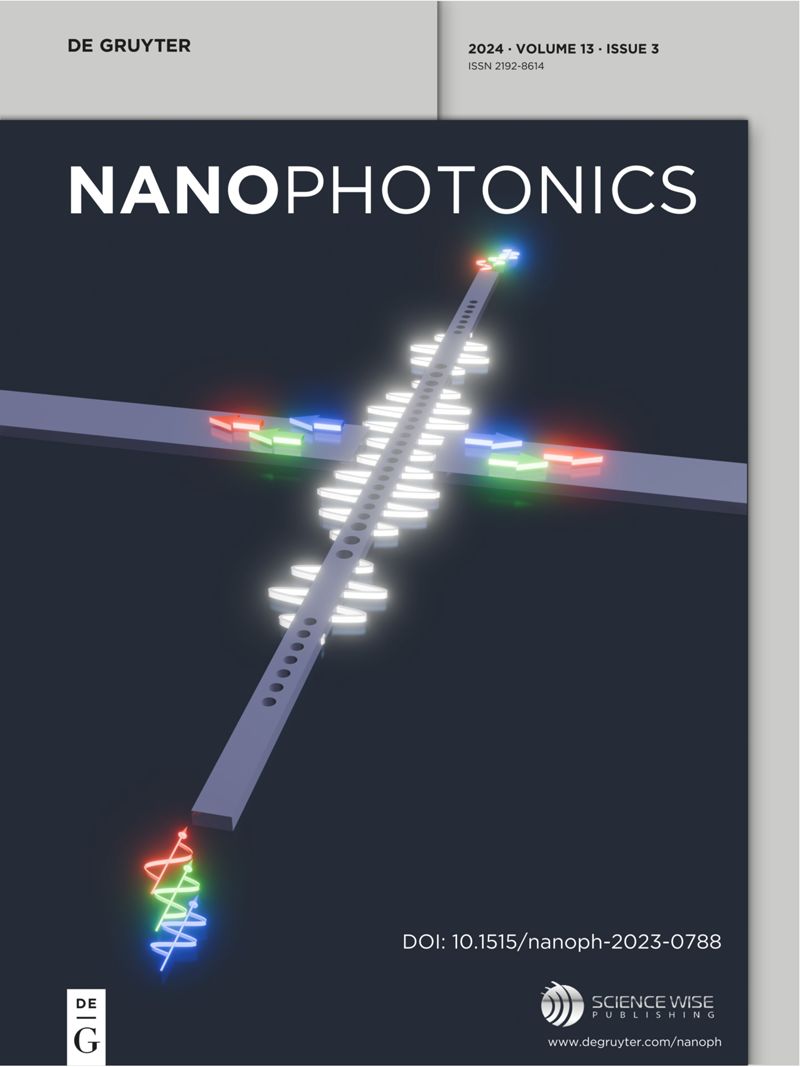Dynamics of dual-orbit rotations of nanoparticles induced by spin–orbit coupling
IF 6.6
2区 物理与天体物理
Q1 MATERIALS SCIENCE, MULTIDISCIPLINARY
引用次数: 0
Abstract
Spin–orbit coupling (SOC) in tightly focused optical fields offers a powerful mechanism for manipulating the complex motion of particles. However, to date, such a mechanism has only been applied to the single-orbit motion for particles, while multi-orbital dynamics have not yet been experimentally demonstrated. Here, the theoretical and experimental realization of dual-orbit rotational dynamics of nanoparticles in a tightly focused circularly polarized Laguerre-Gaussian beam is reported. Analyses reveal that the dual-orbit rotation of nanoparticles originates from SOC in a tightly focused vortex beam, with the motion velocity and direction determined by the topological charge of the beam. Experimentally, the dual-orbit rotation of polystyrene nanoparticles was observed for the first time using an inverted optical tweezer. In addition, the rotation velocity showed a clear linear dependence on the topological charge of the incident beam. This work reveals the pivotal role of SOC in enabling precise dual-orbit control at the nanoscale, paving the way for applications in optical sorting, grinding and delivery of microparticles.自旋轨道耦合诱导纳米粒子双轨旋转动力学
紧聚焦光场中的自旋轨道耦合(SOC)为控制粒子的复杂运动提供了一种强有力的机制。然而,迄今为止,这种机制只应用于粒子的单轨运动,而多轨动力学尚未得到实验证明。本文报道了纳米粒子在紧密聚焦圆偏振拉盖尔-高斯光束中双轨旋转动力学的理论和实验实现。分析表明,纳米粒子的双轨旋转源于紧聚焦涡旋束中的荷电状态,其运动速度和方向由涡旋束的拓扑电荷决定。实验上,利用倒置光镊首次观察到聚苯乙烯纳米粒子的双轨旋转。此外,旋转速度与入射光束的拓扑电荷有明显的线性关系。这项工作揭示了SOC在实现纳米级精确双轨控制方面的关键作用,为微颗粒的光学分选、研磨和输送应用铺平了道路。
本文章由计算机程序翻译,如有差异,请以英文原文为准。
求助全文
约1分钟内获得全文
求助全文
来源期刊

Nanophotonics
NANOSCIENCE & NANOTECHNOLOGY-MATERIALS SCIENCE, MULTIDISCIPLINARY
CiteScore
13.50
自引率
6.70%
发文量
358
审稿时长
7 weeks
期刊介绍:
Nanophotonics, published in collaboration with Sciencewise, is a prestigious journal that showcases recent international research results, notable advancements in the field, and innovative applications. It is regarded as one of the leading publications in the realm of nanophotonics and encompasses a range of article types including research articles, selectively invited reviews, letters, and perspectives.
The journal specifically delves into the study of photon interaction with nano-structures, such as carbon nano-tubes, nano metal particles, nano crystals, semiconductor nano dots, photonic crystals, tissue, and DNA. It offers comprehensive coverage of the most up-to-date discoveries, making it an essential resource for physicists, engineers, and material scientists.
 求助内容:
求助内容: 应助结果提醒方式:
应助结果提醒方式:


